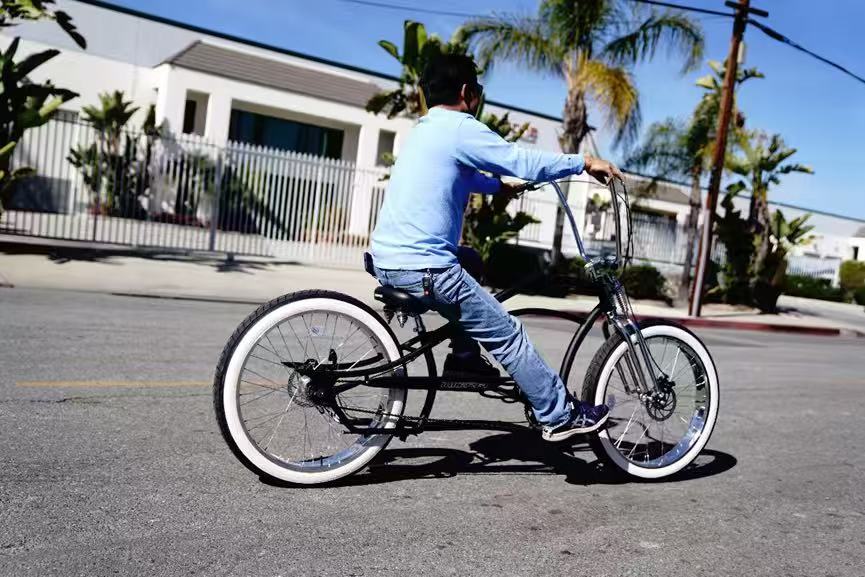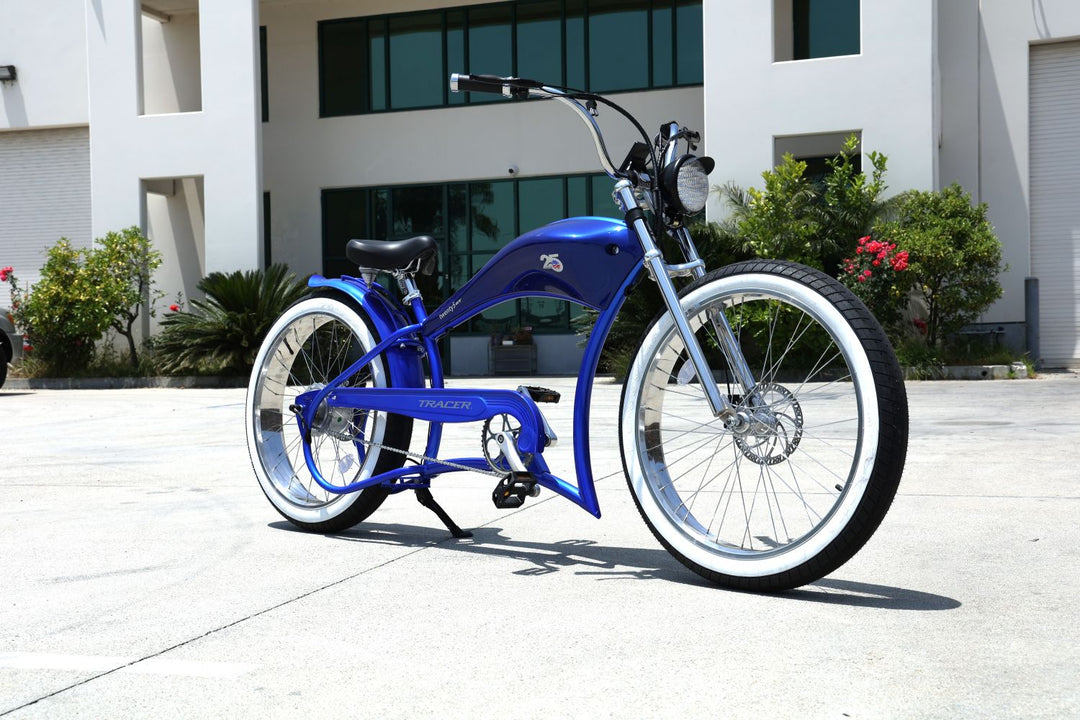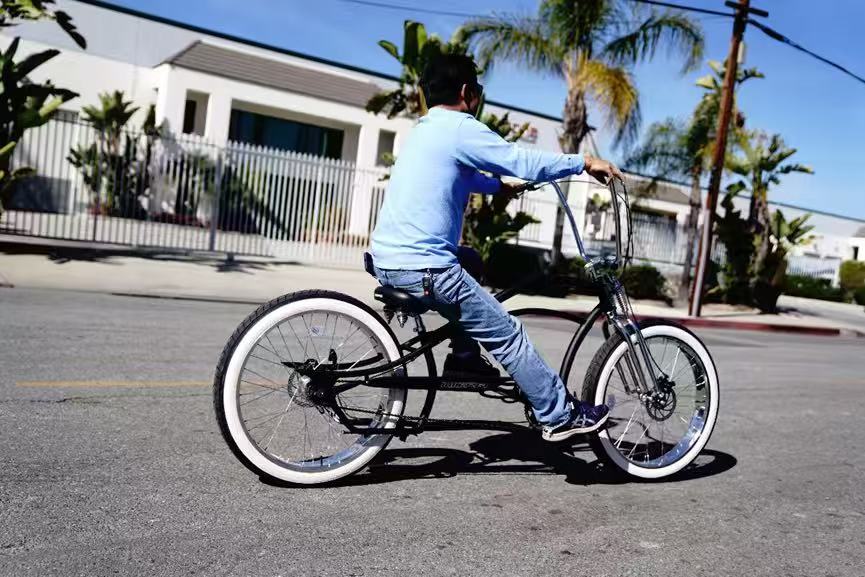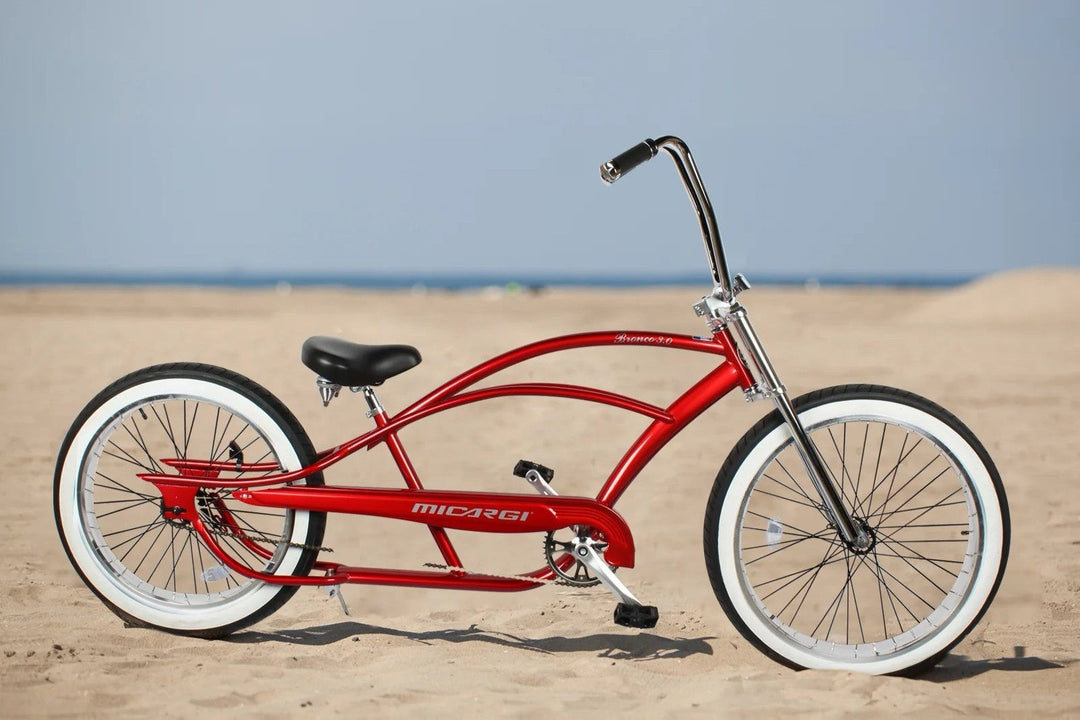Can Cruiser Bikes Go Off Road? A Complete Guide to Off-Road Capabilities

Yes, cruiser bikes can go off-road-but with limitations. These comfortable stylish bikes are capable of handling light off-road terrain such as packed dirt paths gravel rail trails, hard sand, and dry grass areas. This guide will help you understand exactly what off-road terrain your cruiser can handle, how to optimize it for different surfaces, and what techniques to use for safer, more enjoyable off-road adventures.
Design Features of Cruiser Bikes
Cruiser bikes are engineered with comfort as their core priority, a design philosophy that directly influences their speed capabilities. Key features include:
Fat Tires: Typically equipped with broad tires (often 2.0 to 3.0 inches wide), these provide exceptional stability and a smooth ride on flat surfaces, absorbing bumps and offering traction on varied terrains. However, their larger contact area with the ground increases rolling resistance.
Upright Riding Position: The frame and handlebar design promote an upright posture, reducing strain on the back and neck during long rides. While this enhances comfort, it also creates greater wind resistance compared to the aerodynamic, hunched position of road bike riders—though it can improve visibility on uneven terrain.
Heavier Frames: Constructed for durability, cruiser bikes often feature sturdy steel frames that add weight. This robustness ensures longevity but makes maneuvering over off-road obstacles more challenging compared to lighter bikes.
These design choices prioritize a relaxed riding experience over speed, making cruisers ideal for casual outings but less suited for high-speed performance.
Off-Road Capabilities of Cruiser Bikes
Cruiser bikes are not designed for serious off-road use, but they excel in specific light terrain. Understanding their limits is key to safe, enjoyable rides.
Suitable Terrains
Most cruisers handle these surfaces smoothly:
- Flat dirt roads: These are dirt roads with a relatively compact and smooth surface, with few potholes or bumps. They are relatively easy to navigate for touring bicycles. This terrain does not subject the bicycle's tires and frame to excessive impact, allowing riders to traverse it with relative ease, such as on rural dirt paths.
- Light gravel roads: If the gravel particles are small and evenly distributed, and the road surface does not have noticeable loose or slippery sections, modified cruiser bicycles with wider tires and some suspension capabilities can also navigate such terrain. Examples include gravel paths within parks or scenic areas.
- Beaches: Riding on beaches requires bicycles with wide tires to increase contact area and reduce sinking. Some beach cruiser bicycles are equipped with wide tires resembling balloon tires, enabling them to ride on relatively firm beaches, such as those near the water's edge after low tide, where the sand is relatively compact and suitable for cruiser bicycles to ride slowly.
Limitations of Cruiser Bike off-road environments
Cruiser bicycles, while ideal for relaxed rides on pavement, boardwalks, or hard-packed sand, are not designed to withstand the demands of off-road environments. Their structural, mechanical, and ergonomic characteristics present several limitations when used on rugged trails, gravel roads, or muddy terrains.
1. Frame Design Limitations
Cruiser frames, usually steel or aluminum, prioritize comfort and durability over agility. Their upright geometry favors relaxed riding, unlike mountain bikes, which use lightweight, reinforced materials and aggressive angles for impact resistance. As a result, cruisers are less able to handle shocks, drops, or rough terrain, increasing the risk of damage or loss of control.
2. Suspension Absence
Most cruisers have no suspension, which works on smooth roads but transfers every bump directly to the rider off-road, causing discomfort and reducing traction. Mountain bikes, in contrast, use front or full suspension to absorb impacts and maintain control on rough terrain.
3. Tire Performance Shortcomings
Cruiser tires are built for pavement, with smooth, narrow treads and high pressure, making them prone to slipping, poor control, and harsh rides on gravel, dirt, or mud. Off-road tires are wider with deeper knobs for traction, which cruisers lack.


|
Category |
Commuter Tire |
Off-road |
|
Tread Pattern |
Smooth or shallow grooves, low rolling resistance |
Large, aggressive knobs for grip and mud clearance |
|
Width |
Narrow: 25–40mm or 1.5–2.0 inch |
Wide: 2.1–2.6 inch, fat tires up to 3.0–4.0 inch |
|
Air Pressure |
Higher pressure, faster and more efficient |
Lower pressure, better traction and cushioning |
|
Best Terrain |
Asphalt, concrete, urban roads |
Gravel, dirt, mud, mountain trails |
|
Advantages |
Fast, efficient, quiet, durable |
Strong grip, stability, comfort, better off-road control |
|
Disadvantages |
Poor grip on loose/muddy terrain |
Slower on pavement, noisier, requires more effort |
4. Gear Ratio Constraints
Cruisers usually have single-speed or limited (3–7) gears, suitable for flat roads but inadequate off-road. Steep climbs need low gears and descents need higher ones, which cruisers lack. Mountain bikes use wide-range drivetrains (up to 12 speeds) for efficiency and control on varied terrain.
5. Braking Inefficiencies
Cruisers use coaster or basic rim brakes, which lose effectiveness off-road, especially when wet or on long descents. Mountain bikes use disc brakes for reliable, powerful stopping, making cruisers less safe on rugged terrain.
6. Weight and Maneuverability
Cruisers are heavier due to steel frames and bulky components. Off-road, this weight reduces agility, makes tight turns and obstacle navigation harder, and hinders lifting or precise handling on technical terrain.
7. Ergonomic Limitations
Cruisers focus on comfort with wide saddles, upright handlebars, and relaxed geometry, which reduce control and maneuverability off-road. Mountain bikes use narrower saddles, flat or riser bars, and aggressive geometry for better handling on rough terrain.
Stretch Cruisers: A Special Note on Off-Road Use
Stretch cruiser bike, with their extended frames and relaxed geometry, are popular for beaches or cities but are poorly suited for off-roading:
- Low frame clearance: The extended frame sits close to the ground, risking scrapes on rocks or roots.
- Reduced maneuverability: A longer wheelbase makes tight turns or avoiding obstacles (like loose gravel) harder.
Further Reading: Explore where suitable for stretch cruiser in Stretch Cruiser Fat Tire Bike: The Best Choice for Sand Riding.
|
Bike Type |
Key Off-Road Features |
Best For |
|
Cruiser |
Fat tires, upright position, heavy frame |
Light terrain (dirt, gravel, hard sand) |
|
Mountain Bike |
Suspension, knobby tires, lightweight frame |
Steep hills, rocks, mud, technical trails |
|
Hybrid |
Medium tires, mix of comfort/speed |
Moderate terrain (packed dirt, light gravel) |
|
Stretch Cruiser Bike |
Extended frame, low clearance |
Flat pavement, beach boardwalks (no off-road) |
Featured Cruiser Bikes for Better Off-Road Performance
For riders seeking a blend of comfort and better speed, certain models stand out:
Micargi Largo GT 29" Beach Fat Tire Cruiser Bike
- 29x3.0” fat tires on 80mm alloy wheels: Excellent traction on sand and gravel.
- 7-speed Shimano internal transmission: Handles 5–8% slopes with ease.
- Sturdy steel frame: Withstands bumps on light trails.

- 26x3.0/4.0” fat tires: Provide traction on sand, snow, and rough terrain, with shock absorption for smoother rides.
- 750W brushless motor & 48V 20Ah Samsung battery: Powers through gentle inclines and offers up to 50 miles of range.
- Shimano 7-speed gears & 5-level pedal assist: Optimizes effort for varied terrain, easing acceleration and climbs.
Steel frame: Durable but with low clearance, limiting performance on rocky or deeply rutted paths. To better understand its off-road potential, we’ve tested the Chico GT7 in a series of scenarios—from gravel paths to slightly hilly dirt trails. This footage offers a practical look at what to expect when taking this e-bike off-road (note: the video is for reference only)
To better understand its off-road potential, we’ve tested the Chico GT7 in a series of scenarios—from gravel paths to slightly hilly dirt trails. This footage offers a practical look at what to expect when taking this e-bike off-road (note: the video is for reference only)
How to Improve Cruiser Bike Off-Road Performance
1. Upgrade Tires for Traction
Cruiser tires are usually smooth and narrow, limiting grip. Switch to wider (38–45 mm), treaded “gravel” or multi-surface tires for better traction. Semi-aggressive tread improves grip on dirt without slowing pavement rides. Lowering tire pressure to 30–40 psi helps the tire conform to uneven terrain, enhancing control and comfort.
2. Modify Gearing
Single-speed or 3-speed cruisers struggle on hills. Expanding gear range—via a rear derailleur with smaller and larger sprockets or an internal 8-speed hub—improves climbing and flat-ground performance. A smaller front chainring can also ease steep ascents.
3. Add Suspension or Shock Absorption
Full suspension is not practical, but a front suspension fork, suspension seatpost or padded saddle can absorb bumps. Wider, cushioned grips reduce hand and wrist strain on rough trails.
4. Improve Brakes
Coaster or basic rim brakes underperform off-road. Mechanical disc brakes provide reliable stopping in mud or wet conditions. If disc mounts are not available, upgrade rim pads or convert to hand brakes for better control.
5. Reduce Weight and Boost Maneuverability
Heavy steel frames hinder agility. Replace parts with lighter aluminum or alloy alternatives, remove unnecessary accessories, and adjust handlebars forward to improve control and traction.
6. Reinforce Frame and Components
Off-road riding stresses the bike. Add frame protectors, tighten bolts, apply rust-resistant coatings, and keep wheels true to prevent damage and maintain stability.
By focusing on traction, gearing, suspension, braking, weight, and durability, cruisers can handle light off-road conditions more effectively—while keeping expectations realistic compared to mountain bikes.
Conclusion
With proper adjustments, cruisers can handle light off-road terrain like dirt roads, gravel paths, and firm sandy beaches. Their wide tires, sturdy frames, and comfortable design make them suitable for leisurely off-road rides.
However, due to limited suspension, narrow gear range, basic brakes, heavy frames, and reduced maneuverability, cruisers are not suited for steep, muddy, or rocky trails. They cannot match the performance of mountain bikes and are best for relaxed, light off-road riding. Ready to take your cruiser bike off-road? Try these optimization tips and enjoy your adventure safely!
FAQ
Q: Can I turn a cruiser into a true mountain bike?
A: You can upgrade tires, brakes, and add a short-travel fork, but geometry/weight limits remain. It’ll handle light off-road better—not technical MTB trails.
Q: What tire pressure should I use on sand?
A: Often 12–15 PSI for 2.8–3.5" tires—stay within the tire’s rated range and re-inflate before returning to pavement.
Q: Is gravel riding harmful to cruiser frames?
A: Light gravel is generally fine for steel/alloy frames. Avoid repeated harsh impacts; keep up with inspection and maintenance.
Q: Single-speed vs. geared for off-road?
A: Geared cruisers are far more versatile off-road—especially on rolling terrain or mild climbs.
Q: Do I need disc brakes?
A: Strongly recommended. Disc brakes offer better modulation and consistent stopping in dust, mud, and wet.




